












By d-mars.com News Provider
Did you know nearly eight in 10 Americans are trying to improve their sleep this year? In a recent survey, nearly half ranked this goal as their number one priority. If getting better sleep is at the top of your list to improve your health, you may want to review habits that could be preventing you from getting a full night of deep, restorative sleep. This is even more crucial when your schedule changes, such as during spring break or when you have to move clocks forward for daylight saving time.
A survey conducted by One Poll on behalf of Herbalife examined sleep habits of 5,000 Americans, split evenly by state, to reveal who’s getting the best sleep, how many hours per night they’re sleeping, plus typical habits around this often-overlooked aspect of health and well-being.
Discoveries from the survey include the fact that respondents in California appear to get the best sleep, South Carolina coming in second and New York com ing in third, with Maryland and New Jersey tied at fourth place. However, while experts recom mend adults sleep for seven to nine hours per night, re spondents in California report getting just over six-and-a-half hours of sleep per night.
Regardless of where they live, over half of respond ents (55%) can’t remem ber the last time they had a “perfect night” of sleep, and 78% can’t recall when they last had a “perfect week” of sleep. While “perfect” sleep
might be unattainable, less than half (48%) said yes when asked whether they know how to get a good night’s sleep - and 66% of respondents admit that within two hours before bed, they watch TV or scroll through their phone for extended periods of time, which are not recommended as activities conducive to good sleep.
“Getting good quality sleep is essential for everyone,” said John Heiss, Ph.D., and vice president of Global Product Innovation, Herbalife. “Sleep supports important functions including metabolism and brain health and can have an impact on conditions including heart disease, obesity and depression.”
HOW
To help you sleep longer and more deeply, try incorporating these habits into your daily routine.
Don’t overeat near bedtime: Eating lighter, low-fat meals at dinner eases digestion, and healthy carbohydrates

sleep rhythm your body will begin to anticipate. You can prepare for changes in your routine, including when you must “spring forward” your clock, by gradually adjusting your schedule.
Try stress-reduction techniques: Extensive research on the benefits of relaxation techniques like meditation, breathing exercises and reading show they can all help reduce stress. These practices can help reduce insomnia if you do them regularly, especially before bedtime.
Develop a bedtime routine: To help prepare for sleep, dim house lights in the evening and follow a digital detox rule of no computers or digital devices at least one hour before bedtime - including TV watching.
“Blue light from TVs, phones and other digital devices can impair the quality of your sleep. Even if you can fall asleep, the quality of sleep is reduced, and your brain biology is disrupted,” said Heiss. “Blue light can disrupt your circadian rhythm, which controls mood, organ function and metabolism. Blue light may also be the culprit if you’re experiencing food cravings.”
WHICH OF THESE RECOMMENDED STEPS ARE AMERICANS CURRENTLY FOLLOWING?
• Making bedtime and/or morning routine more consistent - 44%
• Taking time away from screens before bed - 39%
• Eating less in the evening/before bed - 30%
• Making time for quiet hobbies before bed (reading, yoga, etc.) - 30%
• Changing diet - 23%
Changing your habits during the day, and especially right before bed, could make all the difference when it comes to getting a good night’s sleep.
Source: BrandPoint
By d-mars.com
regnancy and childbirth are often celebrated as incredible, remarkable events in a woman’s life. But for some, it can be anything but joyful. One in five women experience pregnancy-related mental health conditions. Of those, 20% will face suicidal thoughts or attempt to harm themselves. In fact, maternal mental health challenges are the number one cause of maternal mortality, primarily due to suicide.
Mental health conditions are among the most common complications of pregnancy and can present themselves in many ways. In addition to sleep disruption, some women feel unable or unwilling to care for their baby, while others have negative thoughts about their baby.
In some cases, women may experience hallucinations, psychosis, or severe depression.
Most women have some degree of the “baby blues.”
So, what makes some women more likely to experience more severe mental health issues? Women with a history of anxiety or mood disorders or those with a family history of postpartum depression have a higher risk. Women from under-resourced communities, those with little to no social support, and those who use substances like drugs or alcohol also face higher risks, as are women who have experienced fertility challenges, an unwanted pregnancy, or a difficult birth. And among communities of color, stigma and judgment often prevent women (and men) from seeking mental health treatment.
But it doesn’t have to be that way. As a medical professional specializing in women’s health and a mother of two, I believe it is crucial to shed light on this silent epidemic. The time has come to recognize that pregnancy-related mental health conditions are not only prevalent but largely preventable. With a concerted effort to raise awareness and prioritize maternal mental health, we can take significant steps to save lives and ensure a safer journey into motherhood. Here are a few tips to help combat maternal mental health challenges:
Inform yourself: Take some time to familiarize yourself with emotional changes that can come with pregnancy and the postpartum period. Learning about common experiences and knowing when things may be veering into more serious territory can be immensely helpful. This knowledge not only helps in setting your own expectations but also empowers you to communicate effectively with healthcare providers.
Destigmatize mental health: It’s okay to talk about how we’re really feeling, even when it’s tough. Whether you’re pregnant, a new parent, or a supportive partner or friend, speaking up about mental health challenges should be as normal as talking about a backache. When we open up, we make it easier for everyone to seek the help they might need without fear.

Monitor your well-being: Keep an eye on how you’re feeling emotionally, not just physically. Changes in mood, energy levels or thoughts can be subtle clues that you need some extra care. It’s like keeping a diary of your emotional world - noting down what feels different, what’s worrying you, or even what’s bringing you unexpected joy.
Call your health plan provider: Your health insurer can also help you access care. For example, some insurers like UnitedHealthcare have specially trained advocates to support members who might be struggling due to their social environment. They’re there to help members understand their benefits and guide them to timely care.
Take advantage of your Employee Assistance Program (EAP): These programs typically offer services that relatively few employees take advantage of. For example, if your employer offers EAP in-the-moment support through UnitedHealthcare, you can call in to speak confidentially with a master’s level behavioral health clinician to receive support as many times as needed, in real-time, and around the clock - even if it’s 2 a.m. on a Saturday.* Depending on your situation, you may not need to seek additional behavioral health support with a care provider if your EAP offers personalized guidance.

Seek support: Don’t hesitate to ask your personal or professional networks for help. A trusted healthcare provider can guide you to the right level of support, such as talking to an expert in person or virtually, or joining a network or discussion group about this issue. Your family and friends can be there for you by listening, offering the voice of experience, or even helping with household chores to allow you time to rest. Remember that taking action early is a proactive step toward maintaining your mental health. It’s a sign of strength. As we journey toward safer motherhood experiences, it is essential to recognize the significance of pregnancy-related mental health conditions and take action to address this pressing issue. Together, we can break the silence, prioritize maternal mental health, and ensure that no mother faces this challenge alone. It is time to unite, embrace compassion, and empower all women to embark on their motherhood journey with strength and resilience.
* EAP availability varies by plan design and benefits selected by the employer
Source: BrandPoint
By d-mars.com
News Provider
ein disease, also known as venous insufficiency, is a condition that affects millions of people worldwide. While it’s commonly associated with women, men are also susceptible to this condition. However, due to societal norms and misconceptions, vein disease in men often goes unrecognized and untreated. In this article, we’ll explore vein disease from a men’s health perspective, discussing its causes, symptoms, and treatment options.
What is Vein Disease?
Vein disease, or venous insufficiency, occurs when veins struggle to send blood from the limbs back to the heart, leading to issues like:
• Chronic Venous Insufficiency: Long-term poor blood flow causing swelling, skin changes, and ulcers.
• Varicose Veins: Enlarged, twisted veins visible under the skin, typically in the legs. Spider Veins: Small, web-like veins on the skin’s surface.
• Deep Vein Thrombosis: Blood clots in deep veins, which can become life-threatening if they reach the lungs.
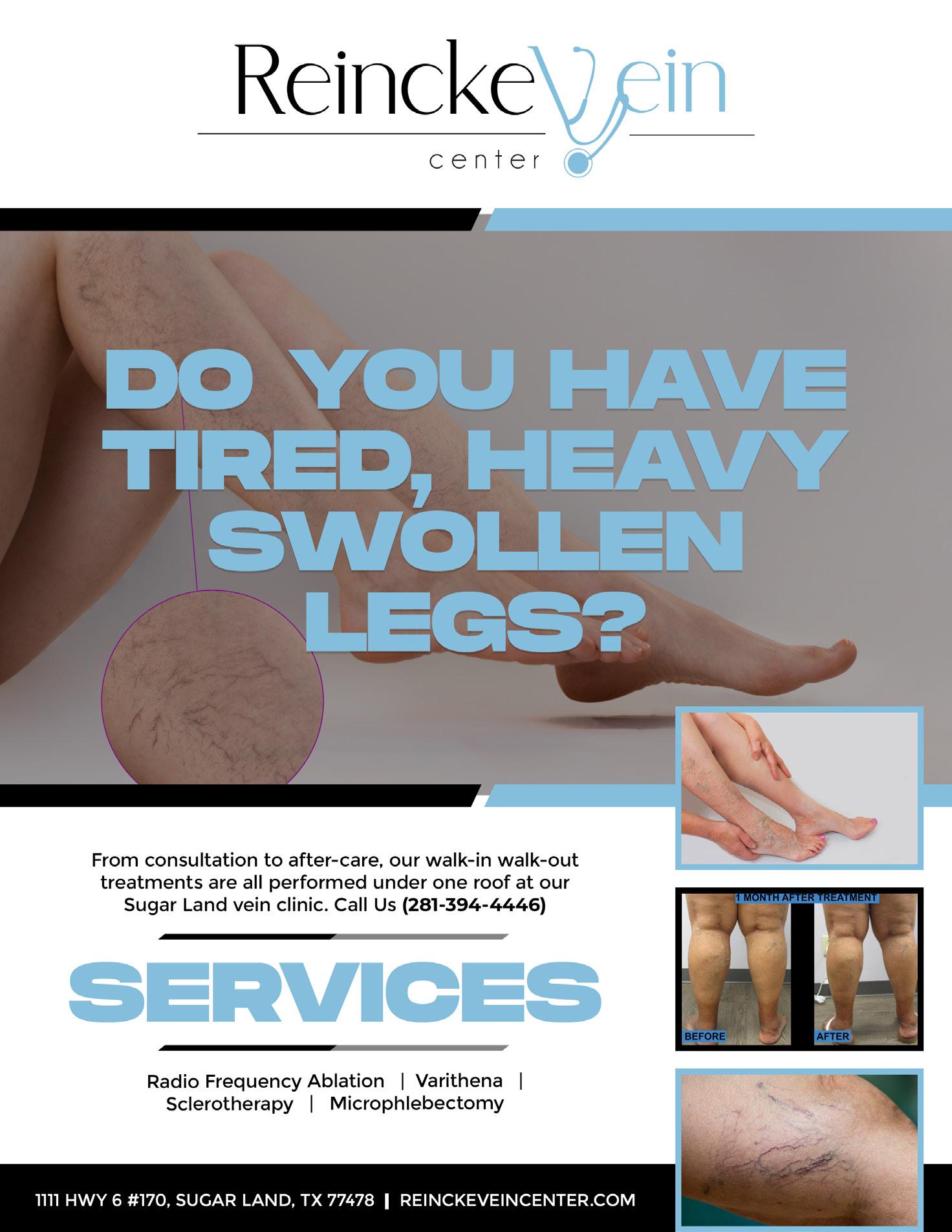

PREVALENCE AND RISK FACTORS IN MEN
Studies suggest that around 45% of men will experience some form of vein disease in their lifetime. Risk factors include:
1. Genetics: A family history of vein disease.
2. Age: Increased likelihood with age.
3. Obesity: Extra weight strains veins.
4. Prolonged Standing or Sitting: Jobs requiring long periods of inactivity.
5. Lack of Physical Activity: Poor circulation due to inactivity.
SYMPTOMS TO WATCH FOR
Men often ignore early signs, mistaking them for aging or fatigue. Symptoms include:
• Aching or heaviness in the legs
• Swelling, especially in the lower legs and ankles
• Itching around veins
• Skin discoloration or texture changes
• Visible, enlarged veins
• Ignoring these can lead to serious complications like leg ulcers and blood clots.
DIAGNOSIS AND TREATMENT
Early diagnosis is crucial. Doctors use physical exams and ultrasounds to assess vein function.
Treatment Options:
1. Lifestyle Changes: Exercise and weight management improve symptoms.
2. Compression Therapy: Compression stockings support veins and enhance blood flow.
3. Medications: Pain and swelling can be managed with medication.
4. Minimally Invasive Procedures: Sclerotherapy, laser treatments, and radiofrequency ablation treat varicose and spider veins.
5. Surgical Options: Severe cases might require vein stripping or other surgeries. PREVENTIVE MEASURES
Men can take steps to reduce the risk of vein disease: Stay Active: Regular exercise boosts circulation.
Maintain a Healthy Weight: Reduces strain on veins.
Elevate Legs: Helps reduce swelling.
Wear Compression Socks: Useful during long periods of standing or sitting.
Avoid Tight Clothing: Restrictive clothing can hinder blood flow.
Vein disease in men is a significant yet often overlooked health issue. By understanding its causes, symptoms, and treatment options, men can proactively manage their vein health. If experiencing symptoms, consulting a healthcare professional for personalized advice and treatment is crucial. Reincke Vein Center offers free consultations for patients to ensure that they are given professional medical advice without the financial burden. Prioritizing vein health contributes not only to physical well-being but also to overall quality of life.

All you need to know about breast cancer in Black women and why it is important to get tested
By Letrice Mason, MSN, APRN, FNP-C Contributing Writer
reast cancer is a pervasive health concern that affects millions of women worldwide. While significant progress has been made in breast cancer research and treatment, disparities in breast cancer outcomes among different racial and ethnic groups persist.
BAmong these disparities, Black women face unique challenges that demand attention and action. In this article, we will delve into the statistics surrounding breast cancer in Black women, explore why they are less likely to get tested, and discuss the importance of addressing these disparities.
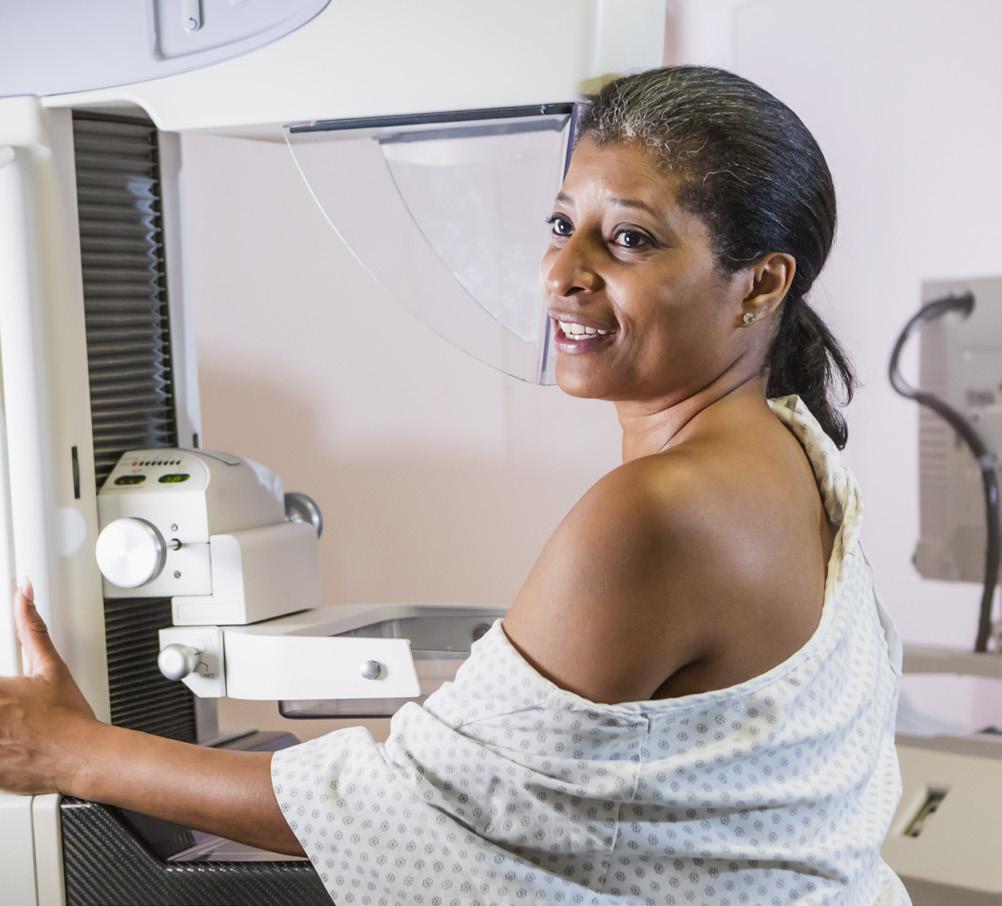
The statistics regarding breast cancer in Black women are concerning. According to the American Cancer
Society, Black women are more likely to be diagnosed with breast cancer at a younger age and a later stage compared to their white counterparts. They are also more likely to die from breast cancer. In fact, the breast cancer mortality rate for Black women is 40% higher than for white women.
One of the key factors contributing to these disparities is the lower screening rates among Black women. Studies show that Black women are less likely to undergo regular mammograms, which can detect breast cancer at an early and more treatable stage. This discrepancy in screening rates is a critical issue that needs to be addressed to reduce breast cancer-related mortality among Black women.
Several factors contribute to the lower screening rates and delayed diagnosis of breast cancer among Black women, including lack of access to healthcare, socioeconomic disparities, cultural and historical factors, and fear, amongst others.
Many Black women face barriers to accessing healthcare services, including a lack of health insurance, transportation issues, and limited availability of healthcare facilities in their communities. These barriers can prevent them from seeking regular screenings and early signs and symptoms of breast cancer.
Socioeconomic factors, such as income and education, also play a significant role in breast cancer disparities. Black women are more likely to live in poverty, which can lead to a lack of awareness about breast cancer and limited access to healthcare resources.
Cultural beliefs and mistrust of the healthcare system, stemming from a history of medical exploitation and discrimination, can deter Black women from seeking medical care and regular screenings.
Finally, fear of a breast cancer diagnosis and the associated stigma can be powerful deterrents to seeking early detection and treatment. Some Black women may delay seeking medical attention due to these emotional factors.
It is imperative to address breast cancer disparities among Black women. Here are some steps that can be taken to promote early detection and better outcomes:
1. Education and Awareness: Raising awareness about breast cancer and the importance of early detection through community outreach and culturally sensitive educational campaigns can help overcome misinformation and fear.
2. Increased Access to Healthcare: Expanding access to healthcare services, particularly in underserved communities, can reduce barriers to screening and diagnosis.
3. Advocacy and Support: Community organizations, advocates, and policymakers can work together to address systemic issues and advocate for policies that improve healthcare access and reduce disparities.
Breast cancer disparities among Black women are pressing issues that demand attention and action. The statistics are clear: Black women face higher mortality rates due to late-stage diagnoses and lower screening rates.
At Her Down There, the team offers affordable, specialized, and high-quality medical attention and support for women. From labs and testing, menstrual irregularities, and medication, to genetic testing, gender-affirming care, and more.
Every woman deserves the chance for early detection and timely treatment, regardless of her race or ethnicity. It’s time to break the silence and work together to ensure that all women have the opportunity for a healthier future.
Book an appointment now and take a step further to a healthier you.
By Tomia Austin, DrPH Contributing Writer
n a powerful celebration of history and health, the As One Foundation, in partnership with the Sickle Cell Community Consortium and the Black Heritage Society, is proud to announce the Sickle Cell Therapeutics Summit & Health Fair in observance of World Sickle Cell Day and Juneteenth.
Happening on Saturday, June 15 from 11 a.m.-3 p.m. at the Fifth Ward Multi-Service Center (located at 4014 Market St., Houston, Texas 77020), this event is an intentional leaning into the fact that both Juneteenth and World Sickle Cell Day share the annual June 19th date, where the Black community is the focal point of both. Interested participants can register for this significant event by visiting https://tinyurl.com/as1scsummit.
Juneteenth, also known as Juneteenth Independence Day and named for the combination of “June” and “nineteenth,” marking the date in 1865, commemorates the pivotal moment in American history - the emancipation of enslaved Blacks in the United States when Union General Gordon Granger arrived in Galveston, Texas, to declare the end of slavery a full two years after the Emancipation Proclamation had been issued. This day is celebrated annually to honor freedom and acknowledge the struggles and triumphs of Blacks in America in their pursuit of equality.
World Sickle Cell Day, observed on June 19 since it was established in 2008 by the United Nations General Assembly and first celebrated in 2009, is dedicated to raising awareness and recognizing the challenges of sickle cell disease—a genetic blood disorder predominantly affecting people of African descent. This day serves as a time to highlight the medical and social challenges faced by individuals living with sickle cell disease and to advocate for improved treatments and care.
Sickle cell disease causes red blood cells to become misshapen and can lead to severe pain, infections, and complications such as stroke and organ damage. Despite medical advancements, many individuals with sickle cell disease still face significant barriers to adequate health care. By focusing on these issues, World Sickle Cell Day aims to foster understanding, support, and change within the healthcare community and beyond.
The convergence of Juneteenth and World Sickle Cell Day underscores the interconnectedness of these observances and highlights the importance of addressing health disparities while celebrating the resilience of the Black community. This year’s Sickle Cell Therapeutics Summit & Health Fair will feature a vibrant Juneteenth Jubilee Booth Expo atmosphere, complete with free food, door prizes, and a kid zone. Educational sessions about sickle cell therapeutics will be a central feature, providing valuable information and resources for those affected by sickle cell disease and trait.
COMMUNITY ENGAGEMENT AND SUPPORT
The event is free and open to the community, particularly those living with sickle cell disease or caring for someone with the condition. Attendees can look forward to a day filled with education, celebration, and community support. Prizes will be awarded to registered participants who are present at the event, adding an exciting incentive for attendees to engage fully with the day’s activities. This event is not only a celebration of freedom and resilience but also a call to action to continue the fight for equity in health care. The list of community partners, in addition to the Sickle Cell Community Consortium and the Black Heritage Society, include the Houston Health Department, Houston Sickle Cell Collaborative, Chris “CJ” Johnson Foundation, Potters Smile, Supporting Our Sickle Cell Survivors (SOS) Parent & Guardian Support Group and Sickle Cell Research & Support Foundation.
JOIN THE CELEBRATION
Register to attend this free and open-to-the-public event at https://tinyurl.com/as1scsummit.
Visit www.AsOneFoundation.org to learn more about the As One Foundation.

– 3 pm
SATURDAY, JUNE 15, 2024
and register to attend the free and open to the public Houston Sickle Cell Summit in observance of World Sickle Cell Day, (tinyurl.com/as1scsummit)
FIFTH WARD MULTI SERVICE CENTER
4014 Market St • Houston, TX 77020
Visit www.AsOneFoundation.org, to learn more about the As One Foundation.
Sponsorship and vendor opportunities are available Contact Tomia@asonefoundation.org


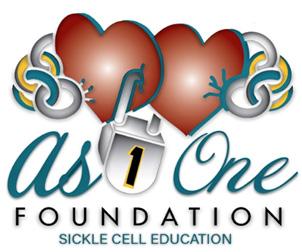

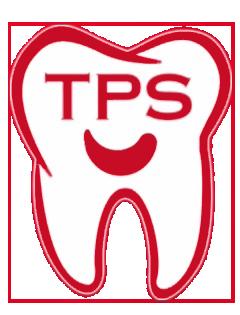
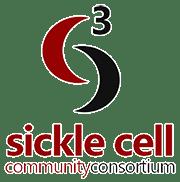





continues to grow not just in student population but also in the construction of new buildings such as the John M. O’ Quinn Law Building and Tilman J Fertitta Family College of Medicine.
UH’s facilities growth includes the continuous need to procure a variety of non-construction goods and services, all of which undergirds UH’s recognition as an institutional “Powerhouse.”

